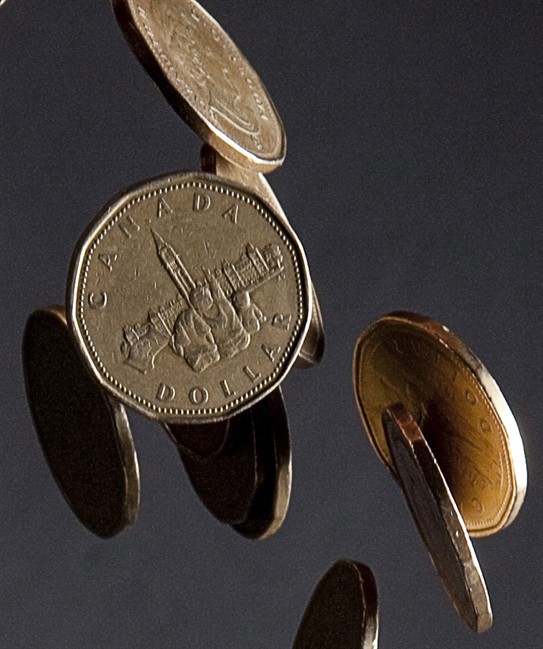The Canadian dollar is expected to continue its swan dive through 2015, a new report from TD Economics said Monday.

The bank’s economics department suggests the loonie will hit a low of 75 cents U.S. by the beginning of next year as the dollar depreciates because of low oil prices and their impact on the domestic economy.
A strengthening U.S. economy meanwhile will further devalue the loonie against the U.S. dollar as the greenback rises.
“The relatively larger growth performance in the United States combined protracted weakness in oil prices has led us to downgrade our outlook for the Canadian dollar,” TD chief economist Craig Alexander and Leslie Preston, also an economist at the bank, said.
The loonie has spiralled lower along with oil’s swoon in recent months, trading Monday at just above 80 cents U.S. – or the weakest exchange rate in six years.
The dramatic plunge in oil prices prompted the Bank of Canada to unexpectedly slash its key, trend-setting interest rate last week, a move that sent the dollar sharply lower.
More expensive
For consumers, a falling dollar is going to make life more expensive, experts say. New vehicles, clothing, fresh and processed fruit and vegetables, snack foods and red meat are just a few products that stand to feel upward pressure on prices amid the loonie’s fall.
MORE: Here’s how the plunging loonie will hit consumer prices
Even the much-touted benefits of lower pump prices are diminished because of the dollar’s decline—Canada is a net importer of refined gasoline (which is priced in U.S. dollars).
“It could keep them a tad higher than they otherwise would be,” Robert Kavcic, an economist at Bank of Montreal said of gas prices earlier this month.


Comments